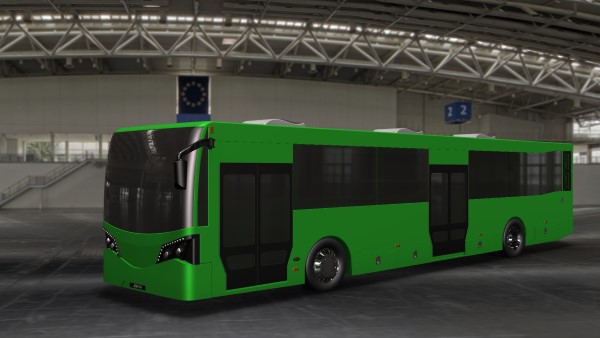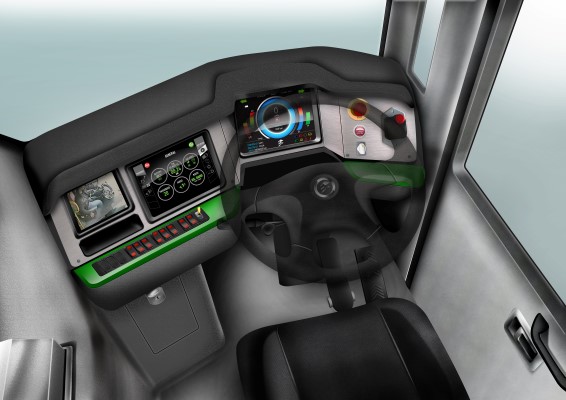
Electric buses are powered solely by batteries. They should not be confused with hybrid buses; which are powered both by batteries and either petrol or diesel engine that is activated after the bus has gone a certain distance.
There are serious concerns around the world’s major cities today of existing diesel-powered buses causing poor air quality and resulting in other propulsion systems taking its place on the back of reducing natural resources.
Sync R&D Sdn Bhd, which has developed the Electric Bus 1 Malaysia (EB1M) program, has successfully delivered praise-worthy project management work in design, fabrication and helped both local and international companies become incredibly more successful than themselves.

When I met with their CEO, En Azlan Merican for a chat before the Raya holidays, he exemplified the pride of his team in delivering numerous product engineering feats for their clientele.
“The ah-ha moment came in 2010 when we contemplated the future of our country’s fuel subsidies, depleting resources and how Sync R&D could be part of the solution in saving the environment” explained Azlan.
The team is steadfast in achieving the dream of supplying half (50%) of the nation’s feeder bus fleet size to Prasarana/Rapid KL by 2017; timing it perfectly to meet the demands of an estimated 300 feeder bus service needed when the Mass Rapid Transit(MRT) begins to “rock and roll” around Klang Valley.

“Electric feeder buses will be the preferred start point to leverage on the immediate benefits this will bring to the community as part of the overall Transport Master Plan” explained Azlan.
A fully charged bus can have an effective range of 180 – 200 km; before retiring back to the depot station for recharging. This is ideal as an average shift per driver is approximately 8 hours. With improvements in battery technology and durability, electric buses will travel even longer distances before requiring charging.
GPS tracking, low cost Bluetooth transmitters and seamless payment systems are some of the initiatives Sync R&D toil with; to ensure the joy, convenience and that the interest of commuters is understood.
In the absence of the monocoque body (prototype unit is currently being fabricated), the entire floor plan of the electric bus is slowly taking shape.

Battery packs from difference suppliers are being tested to ensure compliance and integration with the entire vehicle Fleet Management System.
There is clear feeling in this exciting team who seem to be in pursuit of the ultimate “tornado” with ground-up design works in progress (no prizes for guessing my last movie watched).
According to Azlan, the price tag for the e-bus is targeted to be just under a million ringgit compared to RM650k for a diesel bus. However the savings on fuel, maintenance and operational expenses make the lifetime ownership and operating cost of the electric bus considerably less expensive(up to RM200,000 per bus/lifetime or 16% reduction of life cycle cost) besides completely eliminating harmful emissions.
Whether Malaysia is a net importer or exporter of oil (I wish someone can truthfully explain), any savings be it at government level or for any bus operator will augur well in the current capital challenging operating environment.

Having lesser running components and wear and tear items on an electric bus will enable the bus operator to keep significant lesser inventory and ensure faster uptime even. It is not uncommon for even major bus and transport operators today to experience only 75% of their fleet on the road supported in spare parts through rampant cannibalization from the other 25%; resulting in valuable parking spaces at most operators’ premises taken up to stock idle inventory. Chances of this happening are lessened with fewer running components in the electric bus.
To ignore the kind of work companies like Sync R&D have transitioned from is of great peril. It is equally not difficult to recognize the positive impact of nurturing well-rooted R&D capable companies wishing to move on to effective commercialization of an idea that can have on the Malaysian Automotive Industry. While the government is ensuring that there is an adequate supply of young Malaysians with the necessary technical skills and engineering sciences, it also has to think of fostering R&D activities and innovation for the long term economic development of the country.
For private SME companies like Sync R&D to realize their full potential and grow to the desired scale, government support is most wanting during their challenging gestation period in order for the country to benefit economically in the long term. Although the initial investment in vehicles and infrastructure will make electric buses appear to be a more expensive option than simply buying a few more internal combustion engine buses, one has to seriously look at the lower lifetime cost of an electric bus.
In the very near future, for the benefit of the young like Lillian, we can look forward to seeing more of these vehicles operating in Malaysia and cities across the Asian region.
Sync R&D is crucial to Malaysia’s National Automotive policy in championing our drive to make our country an energy efficient hub in the ASEAN region. (Interestingly, the writer took an online global survey to vote if diesel buses should be entirely replaced by all-electric buses and the result was a staggering 90% who said yes)
Now it’s time to Walk all that Talk!




